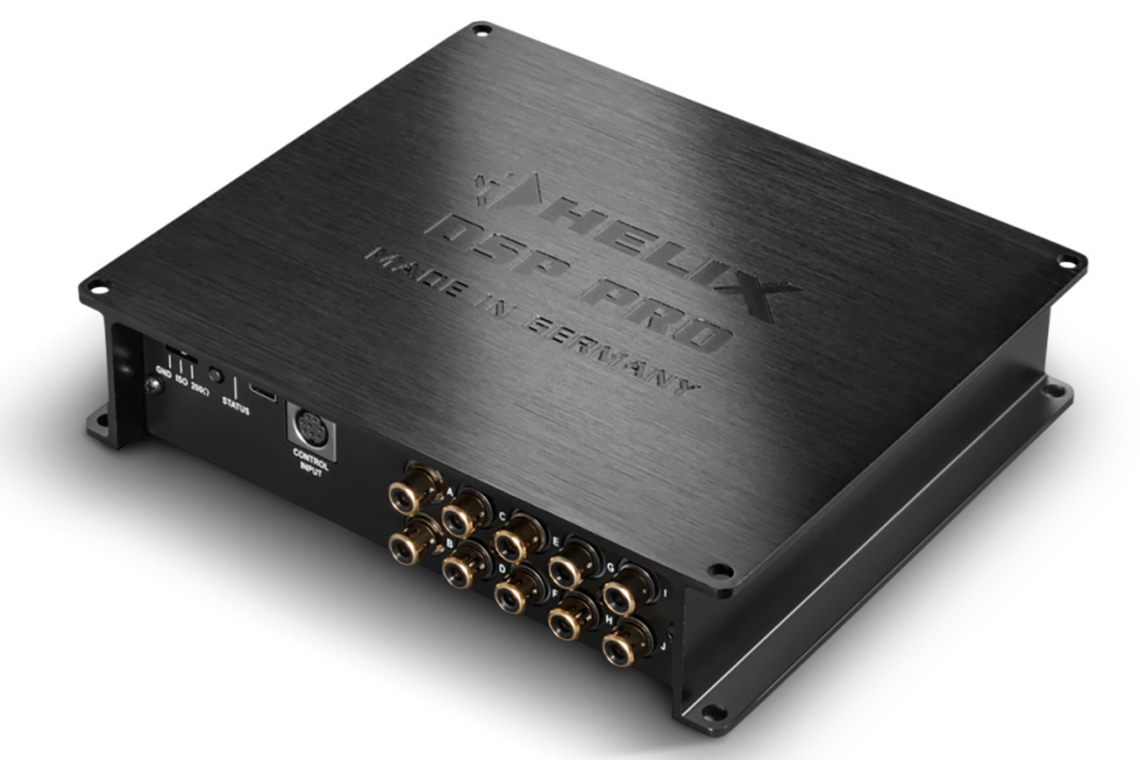When it comes to properly tuning a serious car audio system, many experts believe that the basic crossover and EQ adjustments found on today’s head units and amplifiers are woefully inadequate.
For serious tuning, you need serious equipment, and that’s exactly what the DSP PRO from Helix is. Helix audio gear is designed and manufactured in Germany by Audiotec-Fischer, so you know the engineering has been done with Teutonic thoroughness.
 The DSP PRO is the top-of-the-line Helix processor, incorporating the latest generation of high-speed audio processing with a sampling rate of 96 kHz. The DSP PRO comes with eight channels of input and 10 channel outs. Each channel can be independently configured using the latest software downloaded from the Audiotec-Fischer website. The high performance processor has a suggested retail price of $999.95 USD, and is available through authorized Brax and Helix dealers.
The DSP PRO is the top-of-the-line Helix processor, incorporating the latest generation of high-speed audio processing with a sampling rate of 96 kHz. The DSP PRO comes with eight channels of input and 10 channel outs. Each channel can be independently configured using the latest software downloaded from the Audiotec-Fischer website. The high performance processor has a suggested retail price of $999.95 USD, and is available through authorized Brax and Helix dealers.
When it comes to tuning your system, there isn’t much the DSP PRO can’t do. From independent channel configuration, nearly infinite adjustable high- and low-pass crossovers, various crossover alignments and even a custom user-made alignment. The unit also offers extensive equalization, level control for each channel, and digital signal delay. The ability to connect an optional microphone (MTK1), and included RTA function will be a huge plus for many car audio competitors.
The software is logically laid out and very intuitive. I have absolutely no problems connecting and controlling the processor, thanks in part to a well-written and informative owner’s manual. I also appreciate being able to make adjustments and save the file with whatever name I choose, which makes it easy to go back and select specific settings.
CROSSOVER SETTINGS
The DSP PRO provides the ability to select all-pass, high-pass or low-pass for any channel, and you can also select high-pass and low-pass together to create your own custom bandpass crossovers. And I do mean custom. You have an almost infinite set of frequencies to choose from (as the adjustment range covers 20 Hz to over 20 kHz) in very small increments.
Once the frequency is decided, you can select the crossover alignment you prefer: Butterworth, Bessel, Chebychev, Linkwitz-Riley, or create your own user-defined alignment!
In addition to the full range setting, there are seven available crossover slopes, from -6 dB per octave, all the way to -42 dB per octave - in 6 dB increments.
EQUALIZER SETTINGS
What an EQ this is! At first blush, it looks like a standard 31-band EQ, but on closer examination, there are some pretty cool (and very useful) functions. The standard 31-band frequencies are shown on the sliders in the control panel. You can actually adjust the exact frequency of each of the sliders up or down to any frequency you choose. For example, the 1,000 Hz slider can be set to adjust to any specific frequency between 20 and 20,000 Hz. Cool, huh? There’s more. Once you have a frequency selected, you can choose the boost or cut (from +6 dB to -15 dB), then select the Q of the boost or cut that you want with the available Q settings from a wide bandwidth of 0.5 to an incredibly tight 15!
To aid in tuning comprehension, a simulation of the resulting response curve is shown on the screen, so you know exactly what’s going on at all times. If you can’t EQ your system with this baby, well, I guarantee you someone can, and maybe they should be doing your tuning.
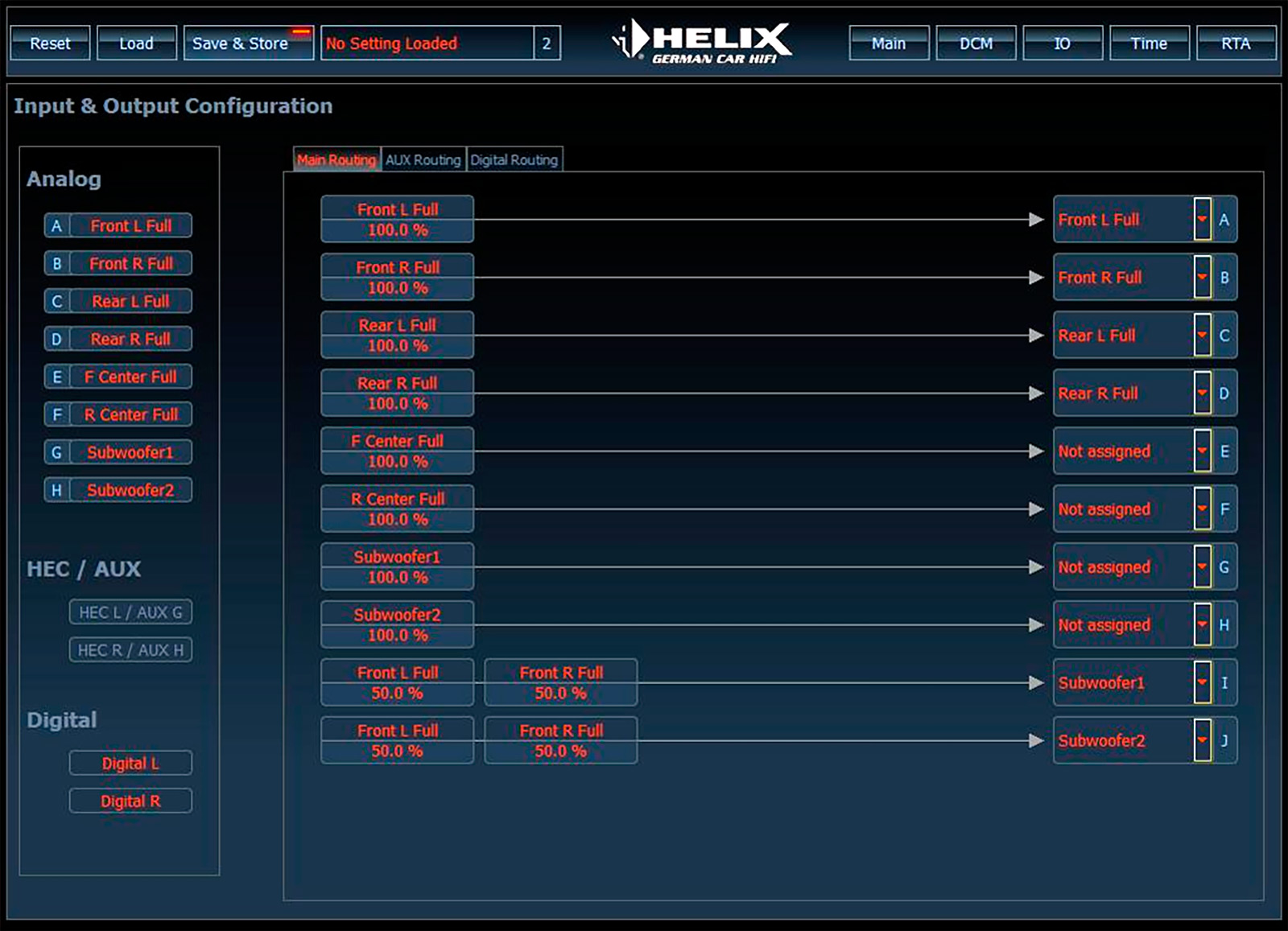 |
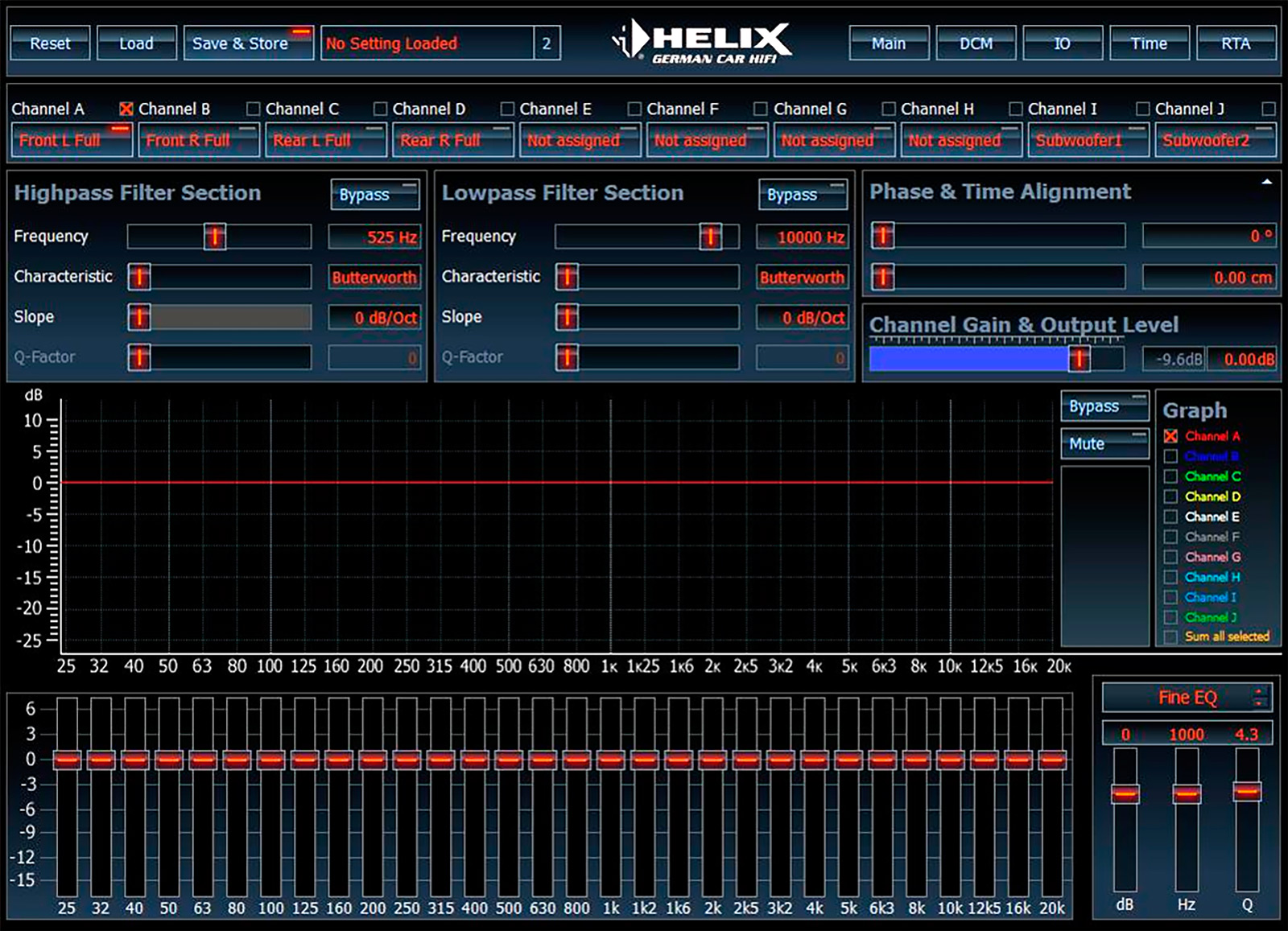 |
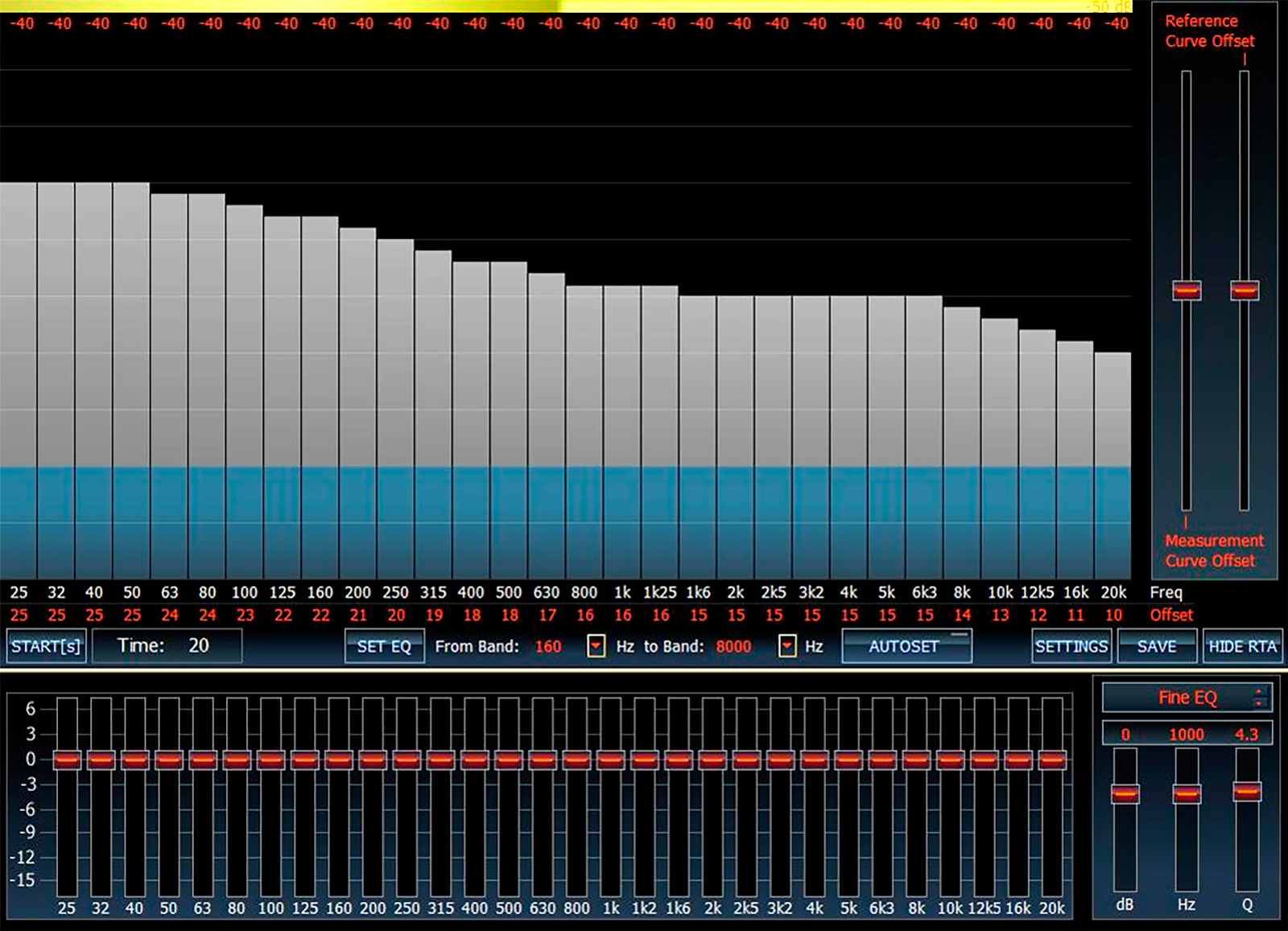 |
SIGNAL DELAY AND PHASE
Okay, you’ve got the crossovers set and the EQ pretty much dialed in. Now it’s time to start fiddling with the staging and imaging. With the Helix DSP PRO, you can adjust the amount of delay on any of the channels individually for the perfect image placement. To make things simpler, you can make the adjustments using either distance or time increments, whichever is easier. Regardless of which way you do it, you can delay the signal in 0.01-millisecond (0.14-in.) steps, all the way up to a delay totaling over 200 inches! Each channel also has a zero to 180-degree phase adjustment and a handy mute button for turning off certain channels while making your adjustments.
ADDITIONAL FEATURES
In the case of connecting to an OEM-type source unit, there are eight channels of high-level inputs, and the device turn-on is automatically enabled with a signal sensing circuit. To aid in system building, a remote output connection is provided to supply a turn-on signal for amplifiers. For those who prefer an all-digital signal path, a built-in SPDIF input is also provided, and is also controlled via the software.
ON THE BENCH
On the test bench, the Helix DSP PRO proves to be a very accurate and very high performance processor. Thanks to the high, 96 kHz sampling rate used, the processor is flat to over 40 kHz! Inter-channel gain tracking is close to perfect, signal-to-noise is excellent at almost -93 dBA, and crosstalk also measures better than most amplifiers are even capable of. The unit has a maximum useable output voltage of 4.0 Vrms and a low output impedance of 80 ohms. Thanks to the high- or low-level inputs, it works well with virtually any aftermarket source unit or OEM radio.
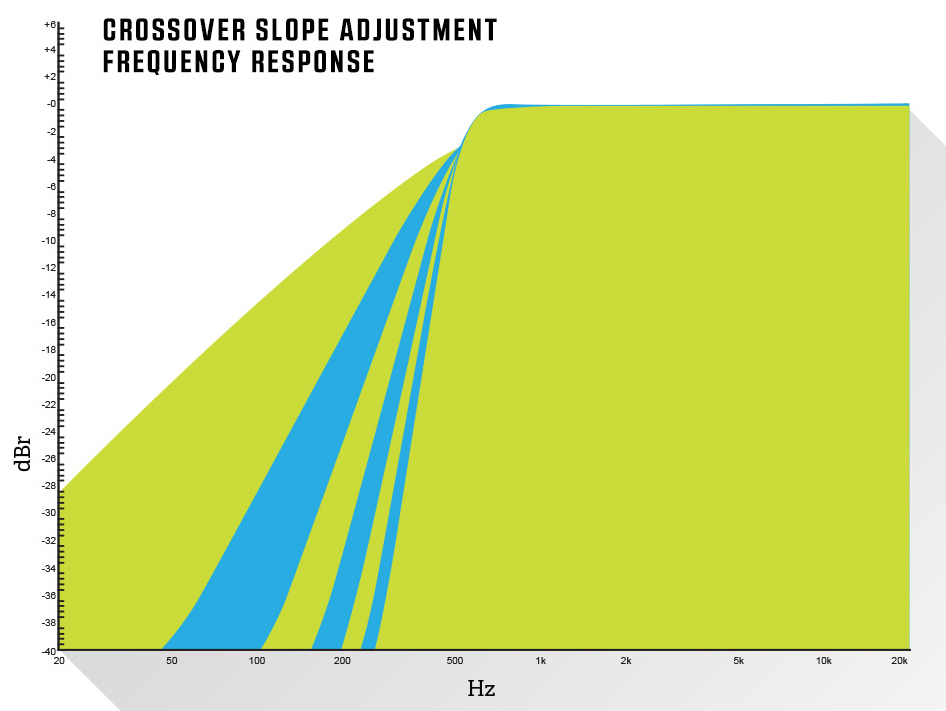 |
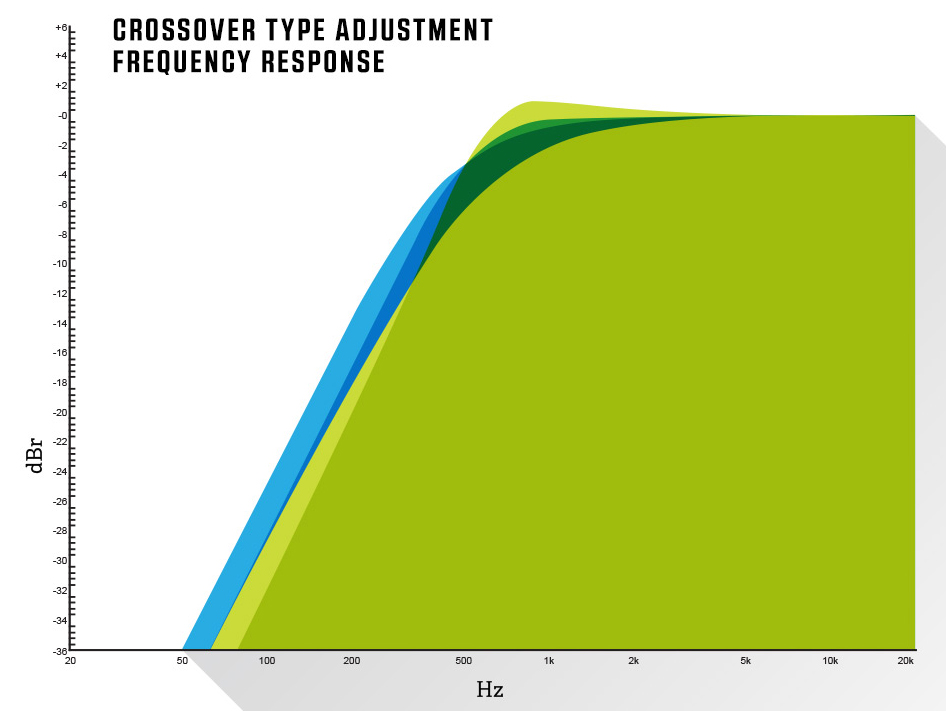 |
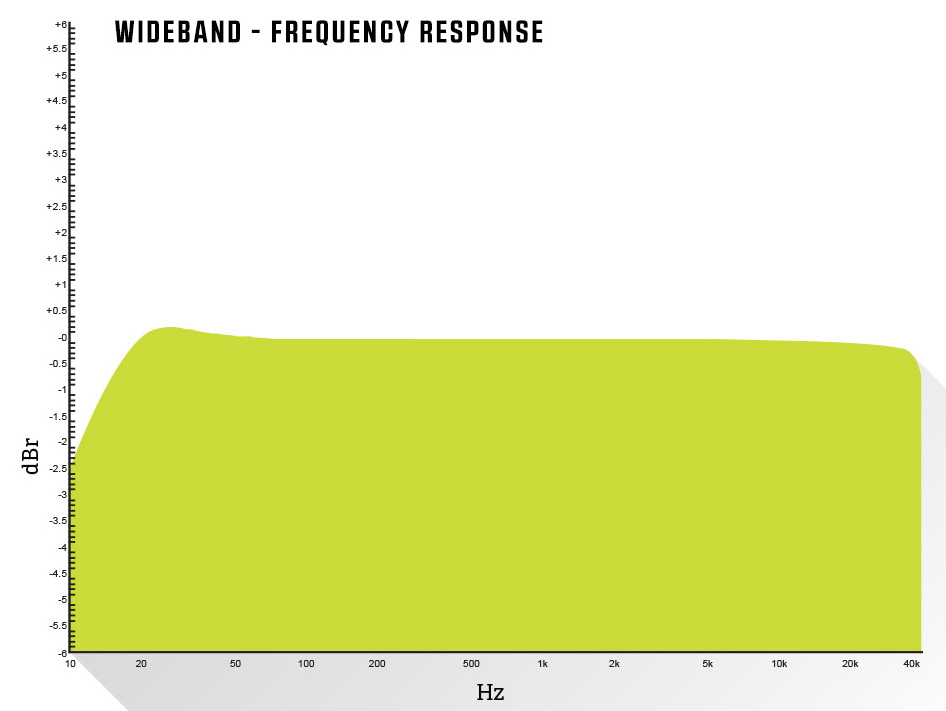 |
CONCLUSION
The Helix DSP PRO is a very competent, very powerful tuning tool. Make no mistake; if you don’t have a clue what you’re doing, you can get into some serious trouble with this much control. However, even for moderately experienced users, thanks to an intuitive control panel design, it's a breeze to connect and manipulate, with very little instruction needed. Adding to that is the ease of downloading and installing the software, and simple USB connectivity to the computer. This alone puts it at an advantage over some of the overly complex, and less-than-intuitive products in this category. Anyone who likes to tune a system will appreciate and enjoy the DSP PRO. The more serious you are about tuning, the closer this piece of gear will be to the top of your must have list. www.helixhifi.com
Related Articles
 Air Lift Performance ALP4 - Next Level Air Suspension Management
Air Lift Performance ALP4 - Next Level Air Suspension Management
 Acura To Bring Back The RSX… Sort Of
Acura To Bring Back The RSX… Sort Of
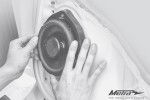 Metra to Show New Speaker Adapter Plates and Harnesses at SEMA 2024
Metra to Show New Speaker Adapter Plates and Harnesses at SEMA 2024
 KW Suspensions Coilovers for Ferrari Testarossa
KW Suspensions Coilovers for Ferrari Testarossa
 Morel Sensus Component Systems
Morel Sensus Component Systems
 Stingray Brings Karaoke to Select Ford Vehicles
Stingray Brings Karaoke to Select Ford Vehicles


